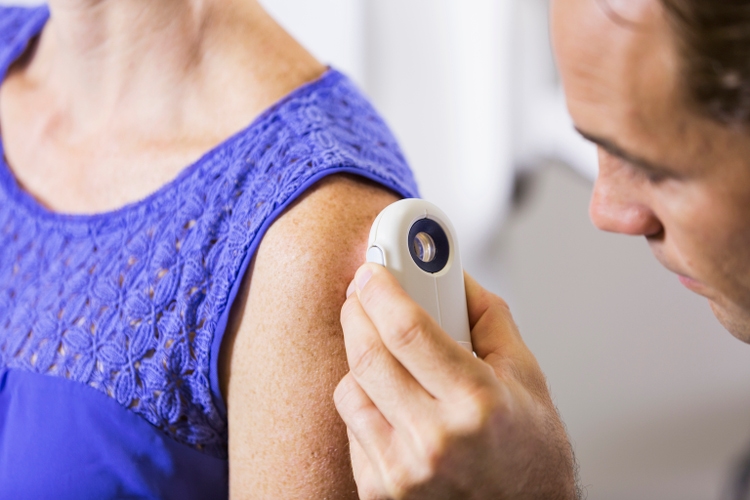
kali9/E+ via Getty Images
Going back three years, Sensus Healthcare Inc.’s (NASDAQ:SRTS) share price started a two-year period of trading flat before taking off in November 2021, soaring from a little over $4.00 per share, to a 52-week high of $15.25 per share in the middle of August 2022.
From there it traded choppy, from a range of about $12 per share to near $15 per share, before the earnings report hit, at which time it dropped from the mid-$14s to close on November 4 at $6.34 per share.
In this article, we’ll look at the latest earnings numbers, management commentary, and why the market reacted so strongly to a report that doesn’t appear to warrant such a strong response – at least, when looking at the numbers.
Latest earnings
Revenue for the third quarter were $9 million, up from $5.5 million in the third quarter of 2021, an increase of 64 percent, but missing by $0.54 million. The improvement in revenue came from an increase in units sold, a boost in service revenue, and the impact COVID-19 had on results in 2021.
Net income in the reporting period was $1.8 million, or $0.11 per diluted share, missing by $0.2 million. Last year in the same quarter, the company had $0.2 million in net income, or $0.01 per diluted share.
Adjusted EBITDA for the third quarter was $2.3 million, up from the $0.5 million in the third quarter of 2021.
Gross profit came in at $5.9 million, an increase over the $3.2 million in gross profit in Q3 2021.
At the end of the quarter, SRTS had cash and cash equivalents of $37.6 million, and hadn’t drawn from its revolving line of credit as of September 30, 2022.
As shown in the numbers, there was nothing to justify the huge sell-off of the stock. The only thing I can see is investors may have taken into consideration the weak comps of Q3 2021, and may have been underwhelmed, even though there was overall improvement. I don’t believe that’s what caused the sell-off in and of itself, but it may have been a piece of the puzzle that was included in the decisions to do so, when taking other things into consideration.
The headwinds
The major headwinds the company faced and faces include the weak economic environment, the impact of Hurricane Ian on the Florida market, high interest rates, and weak comps from 2021.
We already talked about weak comps, so I won’t repeat that.
Concerning the ongoing weak economic conditions and the uncertainty accompanying it, the company said the impact there isn’t related to the treatment of non-melanoma skin cancer, rather, the recession will probably have a negative effect on demand for aesthetic procedures. And if the recession is prolonged and deep, that would have an impact on the performance of SRTS.
In regard to how higher interest rates would affect the company’s performance, it isn’t related to demand for its products, but rather the impact on “physician ROI.”
As for Hurricane Ian, the Florida market continues to face challenges as a number of the company’s largest customers haven’t opened their clinics back up, which will without a doubt have a negative effect on the company’s numbers in the fourth quarter.
It’s readily apparent that the company is going to struggle for a couple of quarters, but I still don’t see that justifying the response of the market to the headwinds experienced in the third quarter, and continuing into the fourth.
Florida clinics will eventually reopen, interest rates have no impact on demand, and weak comps from 2021 are coming to an end at the end of 2022.
That suggests to me investors probably looked at all of these in total and ran for the exits. My reason for drawing that conclusion is all businesses are facing the weak economic conditions, and after reporting weaker numbers in a number of cases, never had the sell-off SRTS has had.
Some tailwinds
Not everything was negative in the earnings report, as the company shipped its first 10 TDI systems to hair enhancement centers. That won’t have a meaningful short-term impact on the performance of SRTS, but could provide another significant stream of income if it builds market share.
That said, management noted that it will continue to remain primarily focused on its core dermatology business.
Another positive was about 40 percent of its customers agreed to extend their service agreements after the expiration period ended on its one-year warranty. This should be a decent and recurring revenue stream for the company in the months and years ahead.
Conclusion
I believe the market response to the company’s earnings report and management comments was way overblown. Yes, there was several factors that had a negative impact on the company, but other than the economy and interest rate impact on ROI, they are temporary situations that are working themselves out. There will probably be a weaker quarter, and possibly two for the company, but I don’t see demand going away for its core dermatology business. I think it’ll actually continue grow, possibly outside aesthetic treatments that will probably fall in demand.
But overall, this appears to be a good buying opportunity for investors. Because there’s no way of knowing how the market will further respond if economic conditions worsen, it would be best, in my opinion, to employ a strategy of dollar-cost averaging and careful position sizing if taking a position in SRTS.
I have no doubt in my mind that the share price will recover over time, and even if the company underperforms for a quarter or two, it’s going to come back because the market it serves is one that is not going away, and demand will continue to rise for its treatments.


Be the first to comment